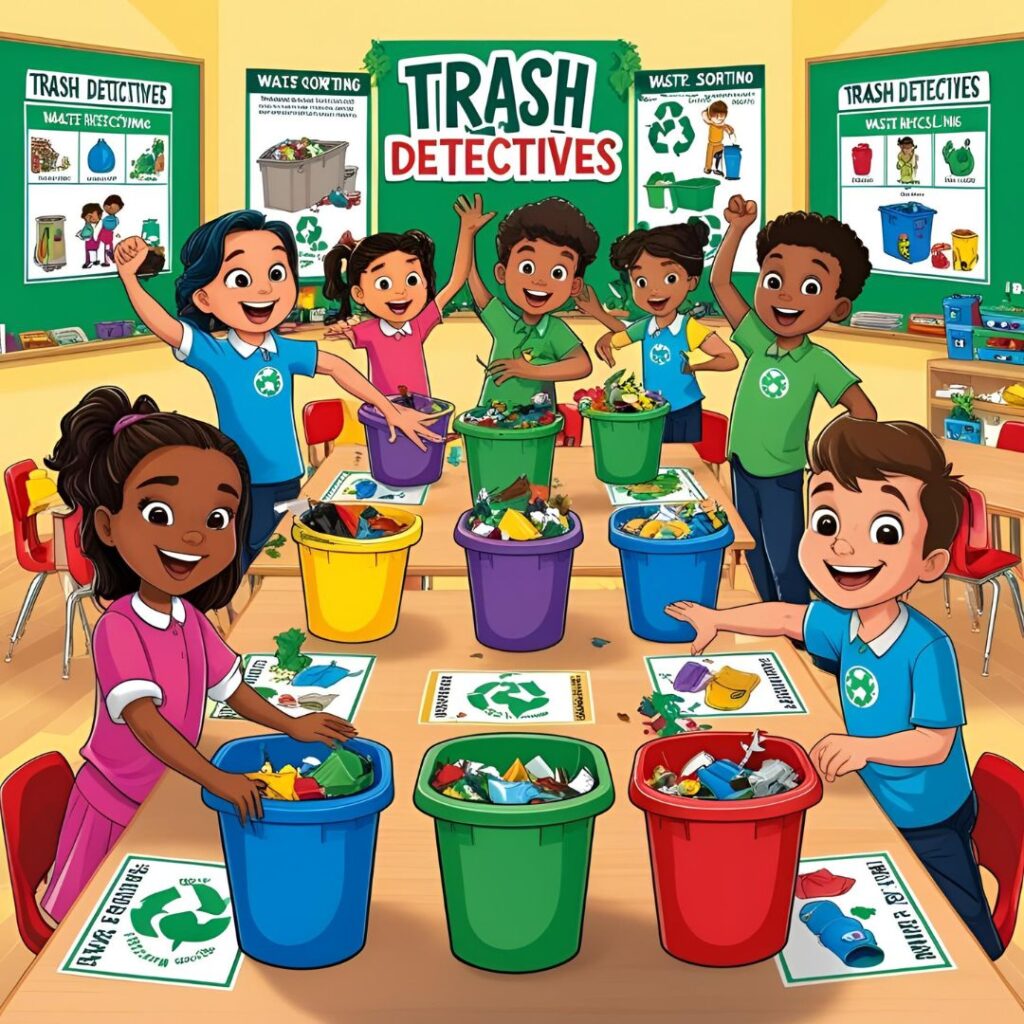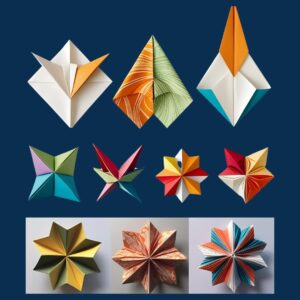Helping children understand the importance of waste separation doesn’t have to be boring. With the right approach, even the most complex sustainability topics can become exciting adventures. One of the most effective and engaging strategies is to turn students into Trash Detectives—young investigators who learn to sort waste properly while solving environmental mysteries in the classroom.
This hands-on educational game not only teaches key concepts like recycling, composting, and landfill waste but also encourages observation skills, teamwork, and responsibility. In this article, you’ll discover how to organize a waste-sorting classroom activity that’s both fun and meaningful for children.

Why Teaching Waste Separation in School Matters
Understanding how to separate different types of waste is a fundamental part of environmental education. When children learn these habits early, they are more likely to practice them at home and share their knowledge with family members. It also prepares them to become environmentally conscious citizens who contribute to a cleaner planet.
Children are naturally curious and love challenges. By turning waste separation into a mystery-solving activity, you tap into that curiosity and turn learning into play.
Setting Up the “Trash Detectives” Classroom Game
You don’t need fancy materials or technology to run this activity—just creativity, basic classroom supplies, and some recyclable (clean) items.
Step 1: Prepare the Materials
Gather a variety of cleaned waste items to use in the game. These should represent different types of disposal categories, such as:
- Paper (notebooks, newspaper, envelopes)
- Plastic (bottle caps, snack wrappers, straws)
- Glass (small jars, broken toy glass pieces – optional and safe versions only)
- Organic (banana peels, apple cores—can be modeled with paper)
- Metal (cans, aluminum foil)
- Non-recyclables (used tissues, dirty packaging—represented safely)
You’ll also need:
- Colored bins or boxes labeled with the waste categories
- Detective badges or hats for each student or team
- Magnifying glasses (optional props for fun)
- Clue cards or “mystery waste” profiles
Step 2: Create the Mystery
Tell the class that something mysterious has happened: someone has mixed up all the trash, and the city needs help to fix the mess! Their job as Trash Detectives is to investigate each item and figure out which bin it belongs to.
You can present the clues in different ways:
- Cards with riddles or facts about the material
- Visual hints (icons, colors, texture photos)
- A “case file” notebook where students record their observations and decisions
Step 3: Start the Investigation
Split the class into small teams. Each team receives a mix of waste items and must analyze them. Their mission is to sort each one correctly while justifying their reasoning.
For each correct match, they earn points or detective “badges.” At the end, celebrate the best eco-detectives—but also reward everyone for participating.
Learning Through Play: What Kids Discover
This activity is more than just a game—it builds real understanding through hands-on experience. Children learn to:
- Identify recyclable materials
- Understand what can go to compost
- Recognize items that don’t belong in recycling
- Reflect on everyday habits and their environmental impact
It also encourages discussion about what happens to trash after it’s thrown away, how landfills affect the planet, and what we can do to reduce waste.
Adapting for Different Age Groups
“Trash Detectives” can be adapted for a wide range of grade levels.
For Younger Children (Ages 4–7):
- Use large, colorful pictures of waste items
- Focus on just three categories: recycle, compost, trash
- Make it more visual and physical (e.g., tossing into big bins)
For Older Children (Ages 8–12):
- Add challenge levels with trickier items (e.g., juice cartons, laminated paper)
- Ask them to explain their decisions using logic or research
- Introduce recycling symbols and local waste management rules
Tips for a Smooth Experience
To make the most of your classroom activity:
- Set ground rules: Emphasize respect, collaboration, and cleanliness.
- Use real examples: Encourage students to bring recyclable materials from home.
- Include reflection time: Ask students what surprised them or what they learned.
- Link it to other subjects: You can include math (counting points), science (decomposition rates), or language arts (writing a detective report).
Extend the Lesson with a Project
To deepen their understanding, you can follow up the Trash Detectives game with a small project:
- Create posters about proper waste separation for the school walls
- Build a mini-recycling station in the classroom
- Interview a local waste worker to learn how recycling happens in real life
- Start a “zero waste challenge” for one school week
These extensions reinforce the knowledge gained through the game and turn it into long-term awareness.
Making Eco-Education Fun and Impactful
The Trash Detectives activity proves that sustainability education doesn’t have to be dry or theoretical. By transforming a daily topic like waste management into an interactive experience, children can internalize green habits and begin to think critically about the materials they use every day.
Through teamwork, creativity, and investigation, students not only learn how to separate waste—they also feel empowered to take better care of their environment.












